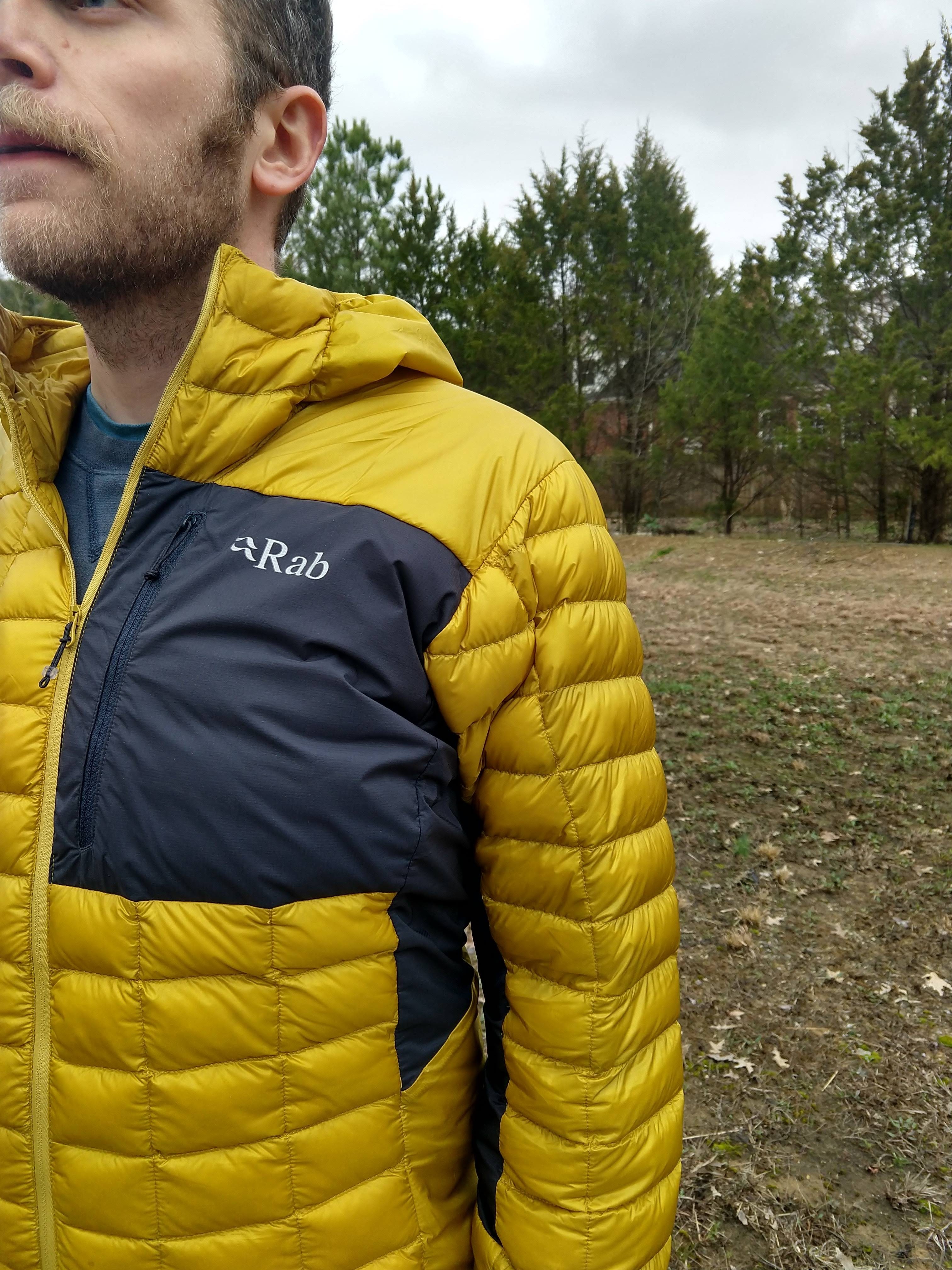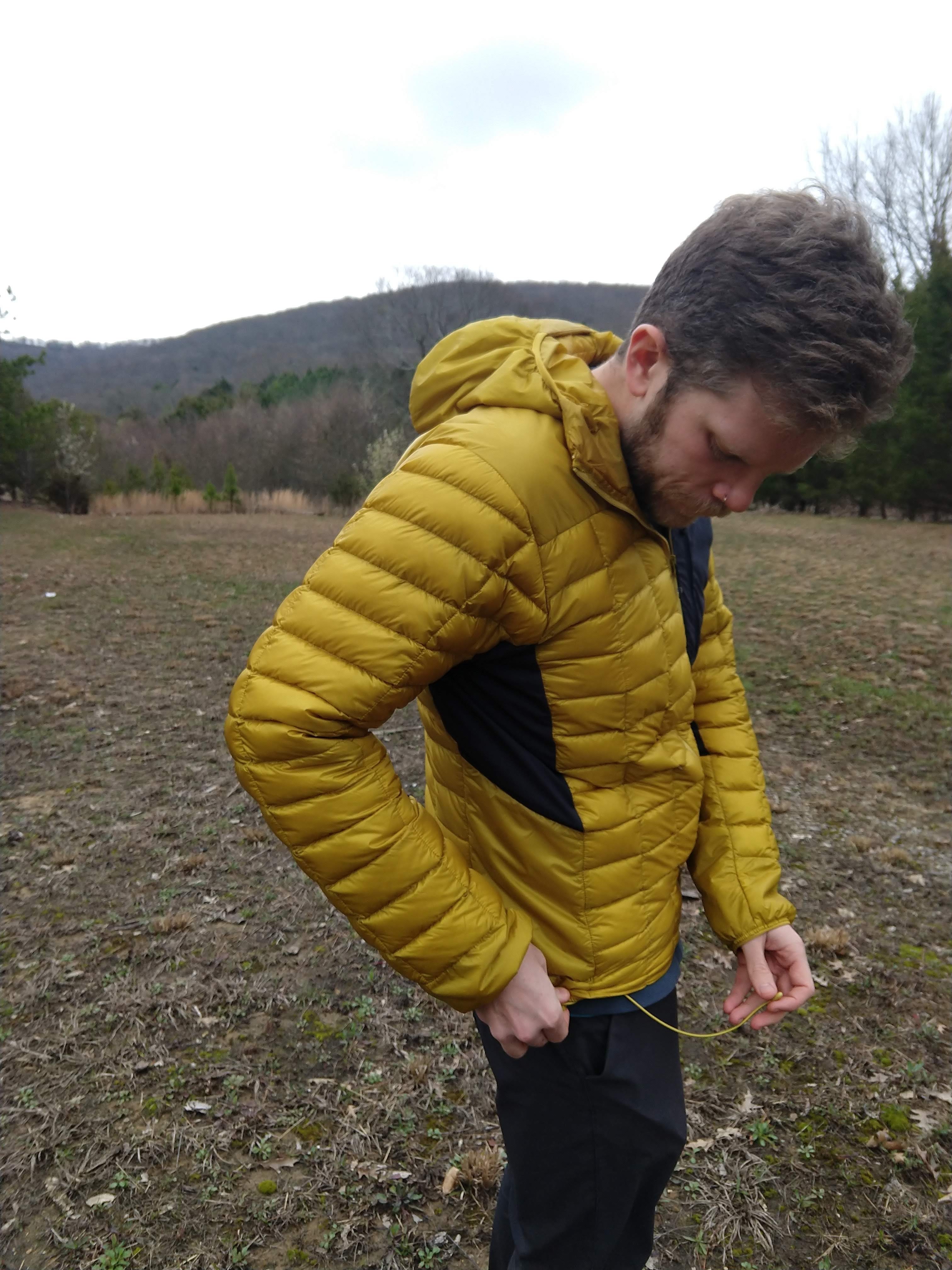Gear Review: Rab Men’s Kaon Jacket
Rab has made a serious contender for the ideal backpacking jacket with the Kaon Jacket. This innovative jacket is made with efficiency in mind and cuts weight everywhere possible. Inspired by the same concept that has made quilts so popular over the past few years, this jacket has removed much of the insulation under the arms to save weight and maximize the body’s natural ability to heat itself. For 8 ounces, this is quite the jacket. It’s weight conscious, extremely efficient, and I like the look too. For folks looking to pick the best insulation layer to keep in their pack for the next chilly adventure, the decision just got tougher.
Rab Men’s Kaon Jacket At-a-Glance
- Weight: 8.8 ounces
- MSRP: $249
- Insulation: 800-fill down AND Stratus synthetic insulation
- Materials: Atmos lightweight ripstop nylon outer fabric and lining
Circumstance of Review
I’ve been testing this jacket over the past month across the Southeast in temperatures ranging from 20-50 degrees Fahrenheit. In addition to jaunts outside, I’ve been implementing it as my daily-use jacket as well. It has been chilly enough to want to use the hood a few times, and I’ve also experimented with cinching the waist as well. I have not gotten the jacket drenched yet, but I have used it in light rain for brief periods of time. At 6 feet tall and 185 pounds, the majority of my shirts and jackets are a size medium, but occasionally a large suits me better, and this jacket is one of those cases. It is a bit slim fitting, so for those who tend to be on the line, I recommend sizing up.
Rab Kaon Jacket Features
- Atmos lightweight ripstop nylon outer fabric and lining
- Uninsulated Pertex Quantum Air underarm panels for mobility
- 800FP R.D.S. Certified European Goose Down
- Rab Fluorocarbon free Hydrophobic Down developed in conjunction with Nikwax
- Down-filled hood with Stratus-filled side panels
- Stratus synthetic insulation over shoulders, cuff area, and hips
- Low profile elasticated cuffs ½ hem drawcord
- Waist of jacket tapers and is extra long in the back to keep those cheeks warm
- Single chest pocket
- Stuff sack included
Is removing the underarm insulation worth saving a few ounces?
I anticipate this to be the most head-scratching and divisive question about this jacket, so let’s give it its own full category? Yes, removing a significant chunk of down from a jacket will reduce its weight. Yes, that saved weight will be just several ounces—insignificant to many. But in my experience, this defining feature is more than a clever strategy to save weight.
As a person who usually has a little extra meat on my arms, I have experienced arm pinching in my layering system. An undershirt might feel fine by itself, but when paired with another layer or two, the area under the armpit can have a tendency to pinch and rub uncomfortably. In lieu of the standard tight point in a down jacket where the down baffles meet, this jacket features a smooth layer of nylon that reduces bunching and pinching.
In addition to extra comfort, the lack of down in the armpits means significantly less sweating in one of the warmest places on the body. Better yet, even if/when those pits finally do start to sweat, instead of soaking through fragile down, now that salty human juice is just going through an easily washed piece of nylon. While it may initially seem like over-the-top weight-saving, the “minimal down in a down jacket” approach has some legitimate benefits.
Performance
I was skeptical about the lack of down under the arms, but in dozens of hours of wearing this jacket in the winter, I can honestly say I never noticed the lack of insulation. The main thing I noticed was how warm this jacket was compared to other puffy jackets. I would argue that this jacket is at least as warm if not a little warmer than the last two puffy jackets I have worn for a significant chunk of time, which are the Arc’teryx Cerium SL Hoody and the Patagonia Micro Puff Hoody. There is one major strike against the Kaon: no standard pockets.
Another feature that I assume is cut to save weight, I missed the pockets as just a place to keep my hands warm. I try not to have to break the gloves out unless I really need them, so I rely heavily on pockets to keep my hands warm when it gets chilly. While there is a single large chest pocket on the jacket, I really did miss the traditional hip-level pockets.
Pros and Cons
Pros
- Lightweight
- Cheap/fair price
- Efficiently designed jacket with an excellent balance of down and synthetic insulation
- Longer backside of jacket keeps rear region noticeably warmer
- Great warmth to weight ratio
- Lack of insulating material under pits
Cons
- No standard hand pockets
- Lack of insulating material under pits
Final Word
The Kaon is an exciting new budget-friendly jacket option for backpackers everywhere. Its warmth is impressive, it has some unique features that are interesting to check out, and as I said before, I think the jacket has a great look to it. I would definitely recommend checking this jacket out. As someone who has never tried anything by Rab before, I am truly impressed. I think depending on the user, the lack of insulation under the armpits could be either a pro or a con, but in my book it is a pro. It’s hard to swallow the lack of pockets, but at the end of the day I’m still in favor of the jacket.
Comparable Jackets
Arc’teryx Men’s Cerium SL Hoody
Weight: 7.6 oz
MSRP: $359
Patagonia Men’s Micro Puff Hoody
Weight: 9.3 oz
MSRP: $299
**This product was donated for purpose of review
This website contains affiliate links, which means The Trek may receive a percentage of any product or service you purchase using the links in the articles or advertisements. The buyer pays the same price as they would otherwise, and your purchase helps to support The Trek's ongoing goal to serve you quality backpacking advice and information. Thanks for your support!
To learn more, please visit the About This Site page.







